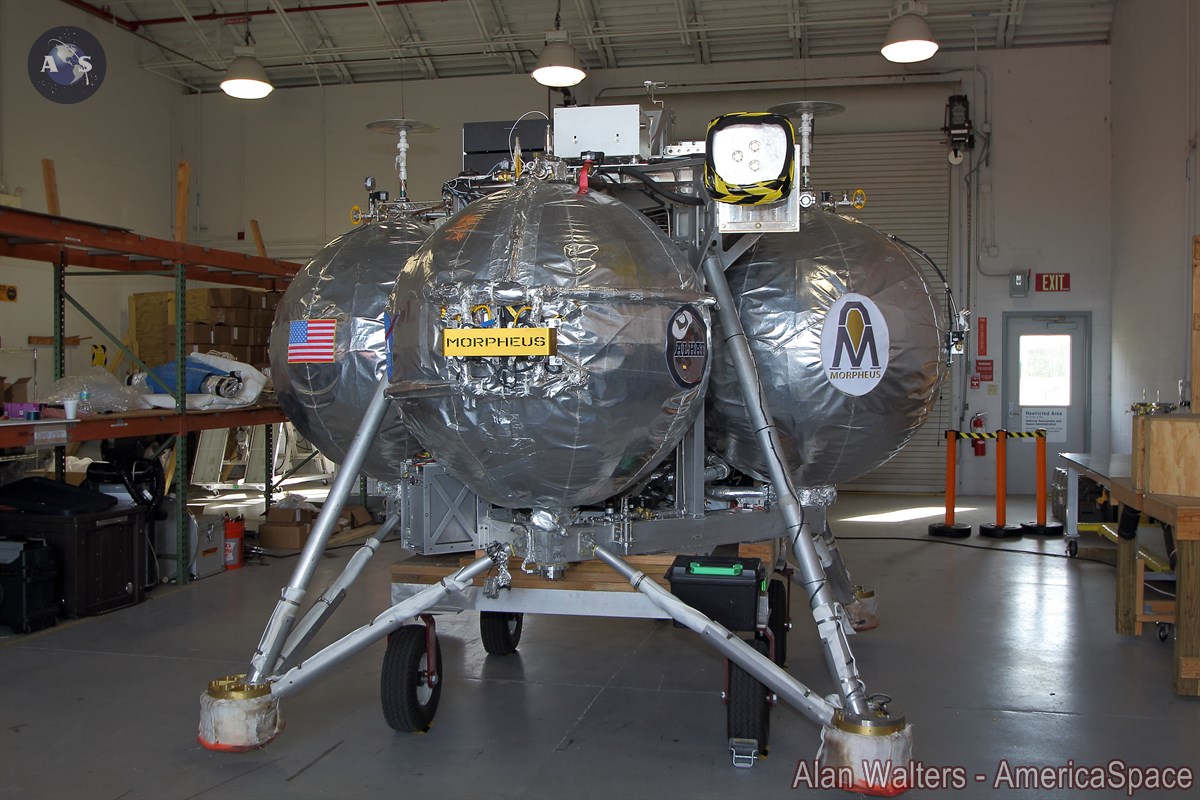
At NASA’s Kennedy Space Center in Florida, at the edge of the shuttle landing facility, is an area that looks very much like the surface of the Moon, complete with rocks and craters. The resemblance, however, is no accident or coincidental act of nature, but rather a landing site for the space agency’s prototype planetary lander, Morpheus, and last week AmericaSpace was given access for an up-close look at the vehicle and the team working to develop it.
The Morpheus Lander is a prototype planetary landing vehicle being developed by NASA in cooperation with private space company Armadillo Aerospace. Morpheus is a testbed and technology demonstrator for the development of planetary landers that will, in the future, be capable of accessing hard-to-reach areas on missions to destinations such as the Moon, Mars, or even as asteroid. To that end, the Morpheus Lander employs a set of innovative technologies, like Vertical Takeoff, Vertical Landing (VTVL) and Autonomous Landing Hazard Avoidance Technology (ALHAT).
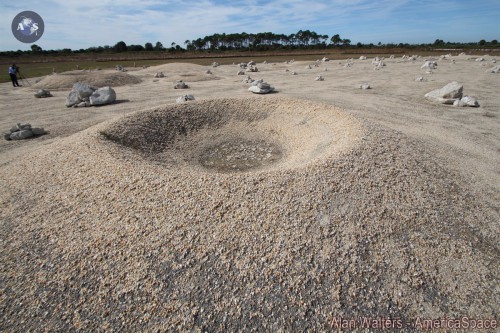
Morpheus, which has been in development under a strict budget since 2010, has conducted many dozens of successful static hot-fire tests and tethered-flight tests at NASA’s Johnson Space Center in Houston, but the vehicle’s development has not come easily. In August 2012, during its second free-flight test at the Kennedy Space Center, Morpheus crash landed moments after lift-off, an accident blamed on a malfunction that resulted in the total loss of the vehicle.
Project Morpheus pressed on to design and build a new upgraded prototype vehicle, utilizing the lessons learned from the crash—despite the fact that the media was only reporting on the failed outcome. “I am sure some might think of Morpheus as a failure since a significant piece of hardware crashed and burned while under test,” said NASA Administrator Charles Bolden during development of the new prototype following the crash. “Contrary to this view, I regard Morpheus as a success. No one likes to lose equipment, but we recognized that failure as part of the price of learning and acted accordingly.”
In the time since the first prototype crashed, the new Morpheus has successfully performed dozens of tethered-flight tests and conducted back-to-back free-flight tests last month before successfully flying on its own—for a fifth time—as recently as Jan. 16. With each free-flight test comes a higher altitude and longer flight. The Jan. 16 test flew its pre-planned trajectory flawlessly, reaching an altitude of 57 meters and traversing 47 meters before landing within 11-inches of the bulls-eye—without an in-flight pause halfway like the previous flight of only 50 meters high.
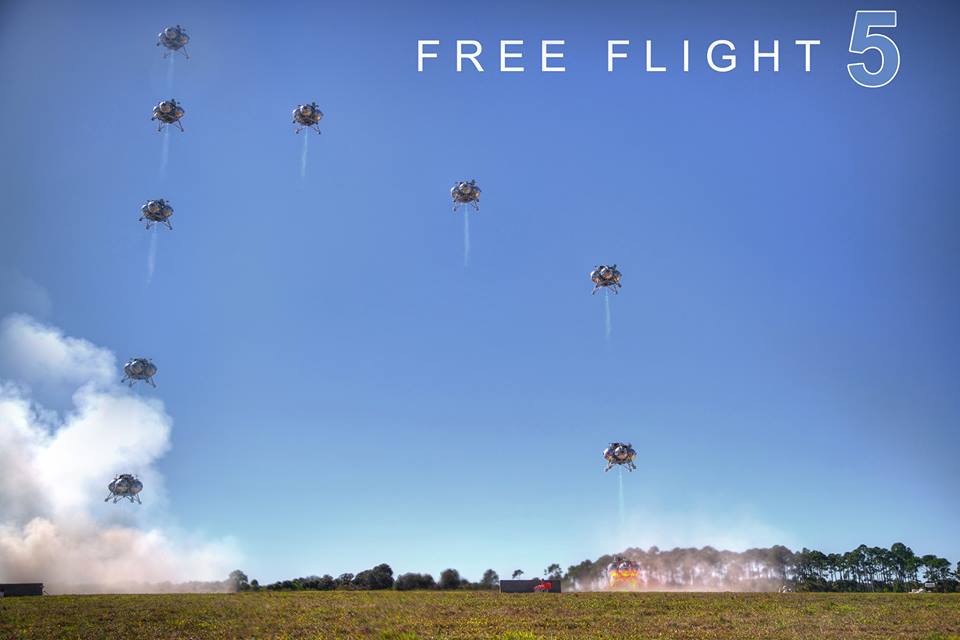
“Last week we had our first successful free flight of the ‘Bravo’ vehicle. The flight was impressively on target with regard to the planned trajectory,” says Jenny Devolites, SE&I Lead for Morpheus. “All of the things we worried so much about – because of the Alpha vehicle crash and all of the testing since then – turned out to not be problems on that beautiful flight test day. There was definitely something redeeming for the team and the Agency — to show that we could do this.”
“The engineers who conceived of the space shuttle set out to make it a reusable spacecraft. Many rocket engines and spacecraft are single-use. Our little vertical test bed – our lander – is also designed to be reusable. But we don’t have thousands upon thousands of team members or a budget like that – we are a small project with less than 50 people,” adds DeVolites. “We are a low cost and lean project with an incredibly dedicated and competent team – a team who wants to build rockets and spacecraft and do whatever they can to help further human spaceflight and exploration.”
VIDEO: Project Morpheus Free Flight Test-5 at KSC Jan. 16, 2014
The VTVL technology used on Morpheus is not something new, as the Apollo Lunar Modules were the first planetary landers to utilize it. ALHAT, on the other hand, comprises a new set of innovative technologies that would allow a future planetary lander to autonomously identify its landing area by creating 3-D maps of the surface on the fly, while being able to navigate and avoid hazardous terrain and ensuring a safe landing for future cargo and crew missions. The work being done with the Morpheus Lander could lead to the development of planetary landers that would be able to reach many places previously thought as inaccessible, like the Moon’s polar regions or deep craters on Mars. Morpheus’ recent successful flights are a positive sign for a developing capability that could make future missions to those places a reality.
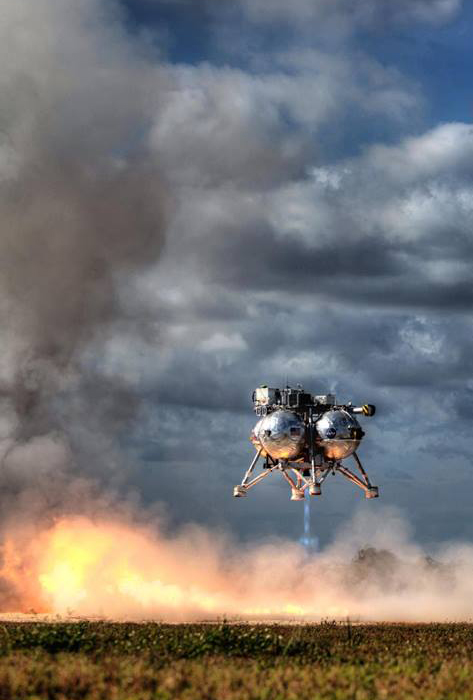
Morpheus utilizes other innovative approaches as well, in addition to its advanced autonomous navigation and landing technologies. Its propellant is a mixture of “green,” non-toxic liquid oxygen/liquid methane fuel, which is stored inside the lander’s four spherical propellant tanks. Future missions to the Moon and Mars could potentially produce these elements through in-situ resource utilization, thus largely mitigating the need for carrying all the necessary fuel required from Earth. Though the current Morpheus prototype vehicle is relatively small, having a payload capacity of 500 kg, the Morpheus team hopes to scale it up in the future to accommodate both crew and cargo.
Project Morpheus is the product of collaboration between six of NASA’s 10 centers, with various aerospace companies and academic institutions involved in its development and testing. The Morpheus teams plans to conduct Free Flight Test-6 next Tuesday, Jan. 21, and they plan on conducting several more increasingly difficult flight tests throughout the year.
The Morpheus team broadcasts their flight tests live at the project’s official website, starting 20 minutes before scheduled liftoff. They also post regular updates, complete with images and video, of the project’s progress on their official Facebook page and Twitter.
This article was written by AmericaSpace writers Mike Killian and Leonidas Papadopoulos.
Want to keep up-to-date with all things space? Be sure to “Like” AmericaSpace on Facebook and follow us on Twitter: @AmericaSpace
BELOW: Photos from our tour of Morpheus “Bravo” and the team’s launch and landing site at Kennedy Space Center. All photos © copyright 2014 Alan Walters, all rights reserved.




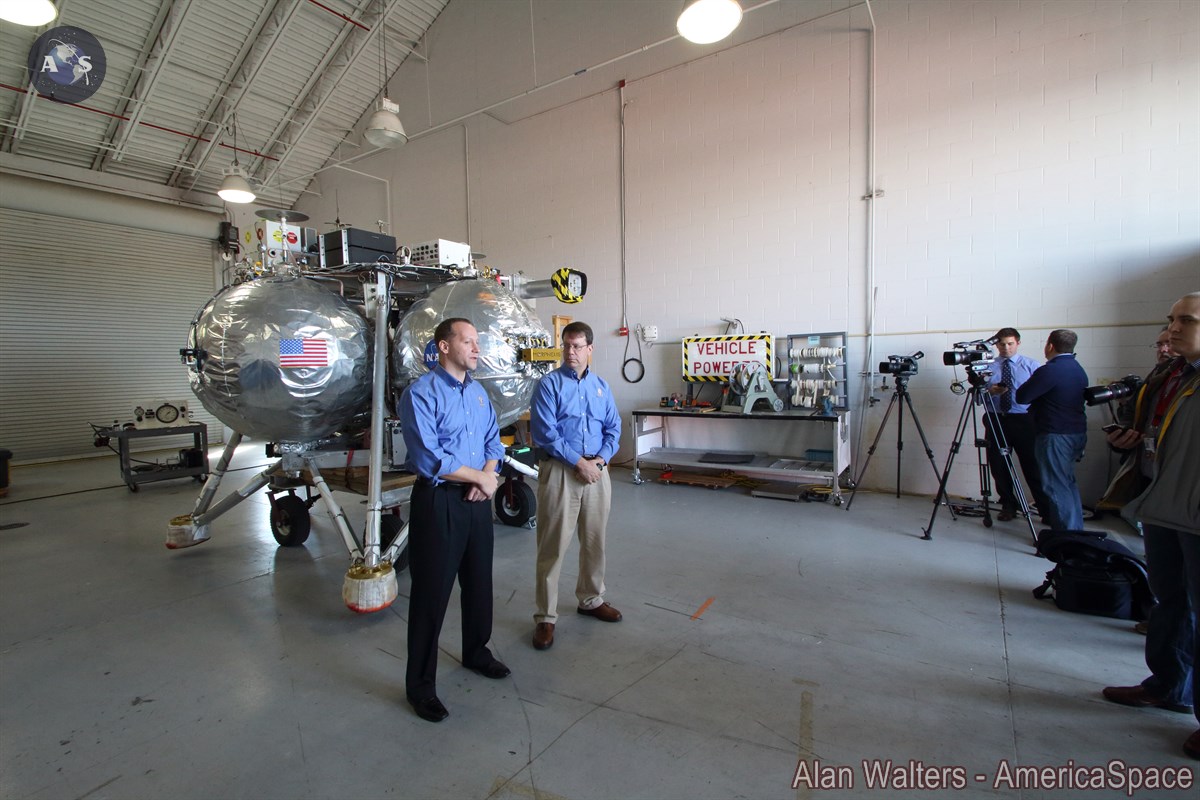
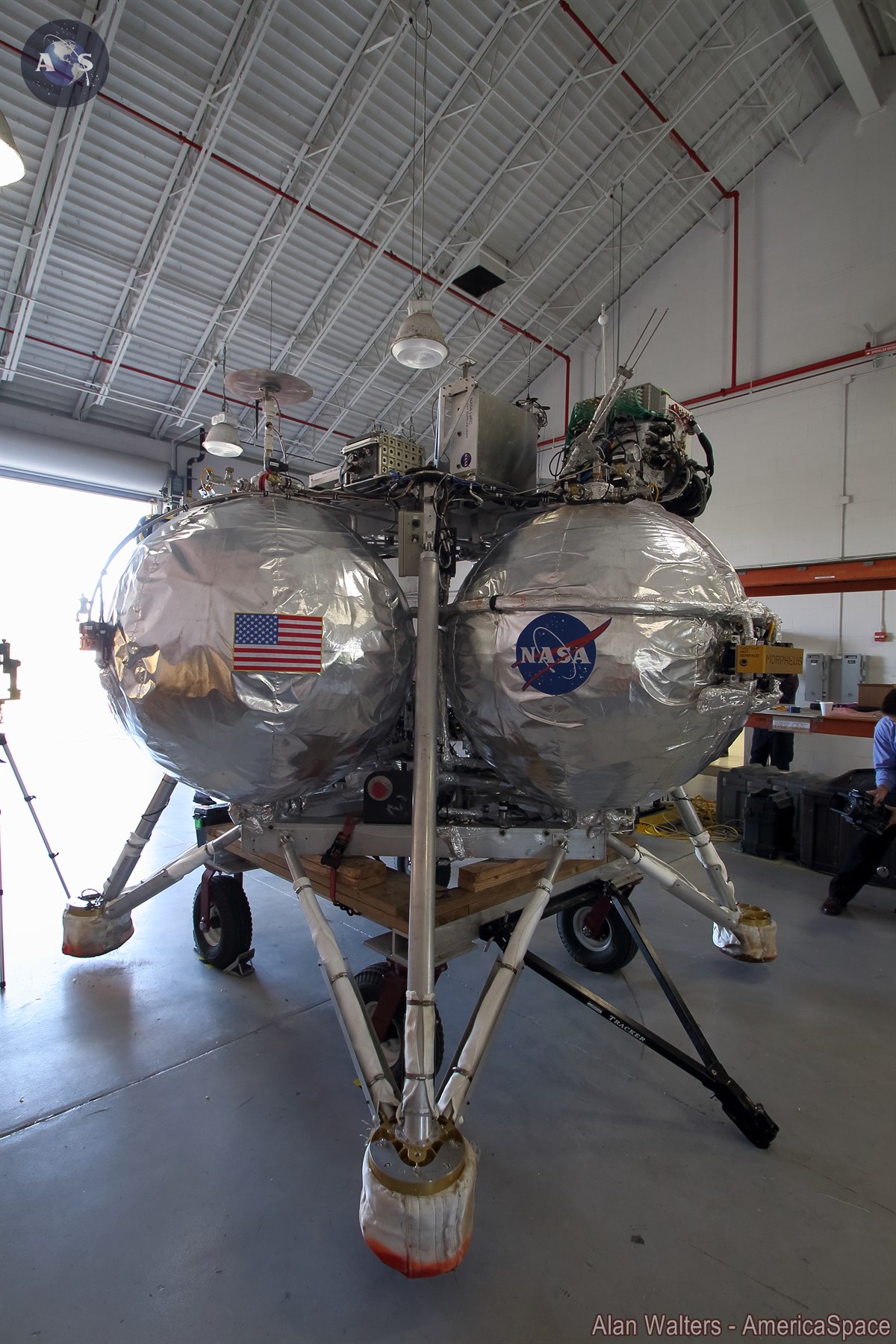
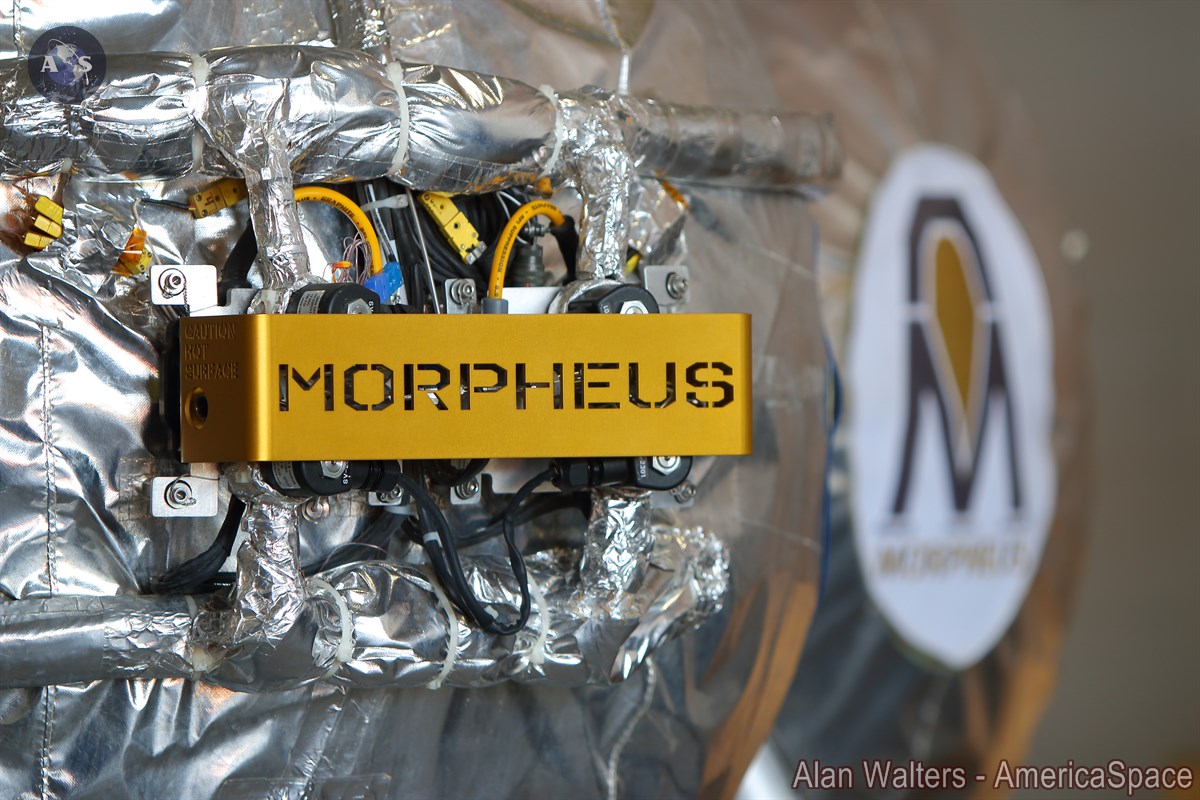
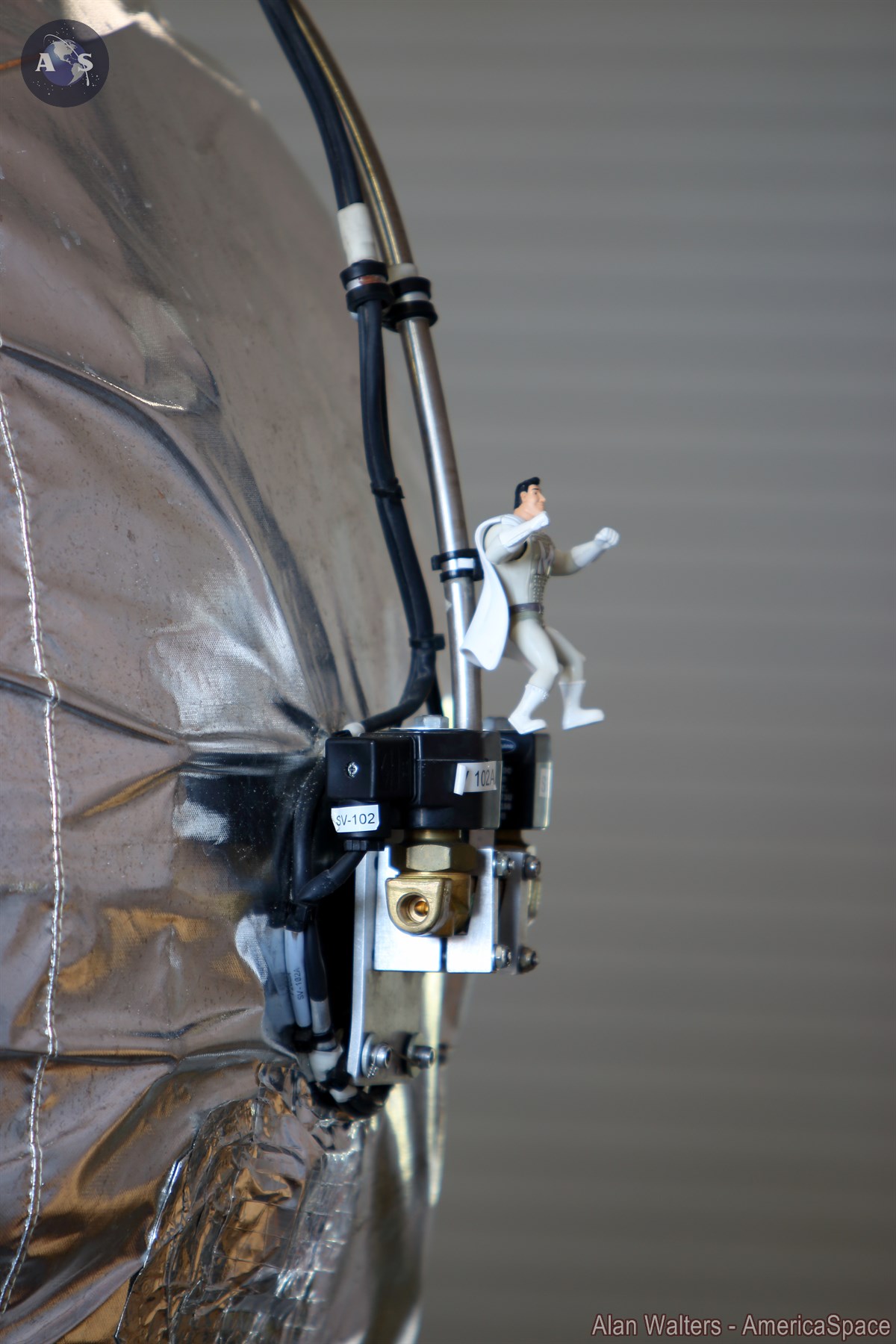
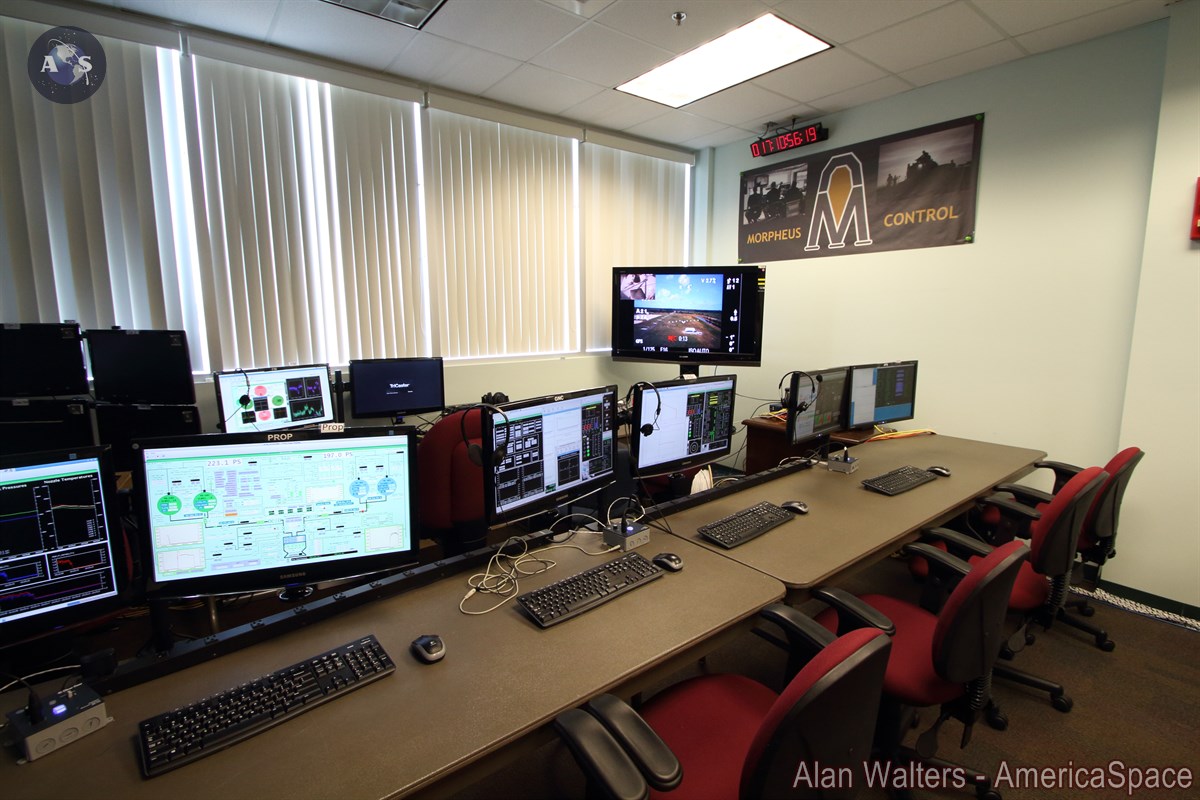
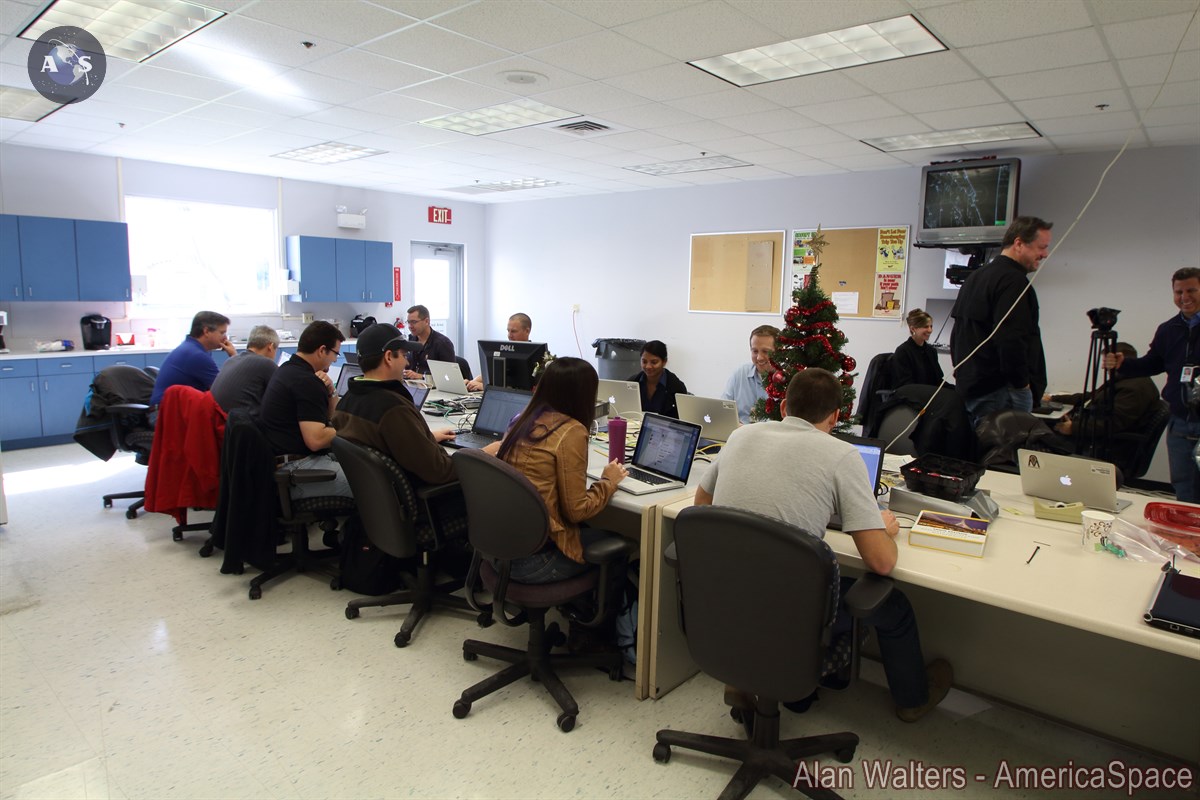
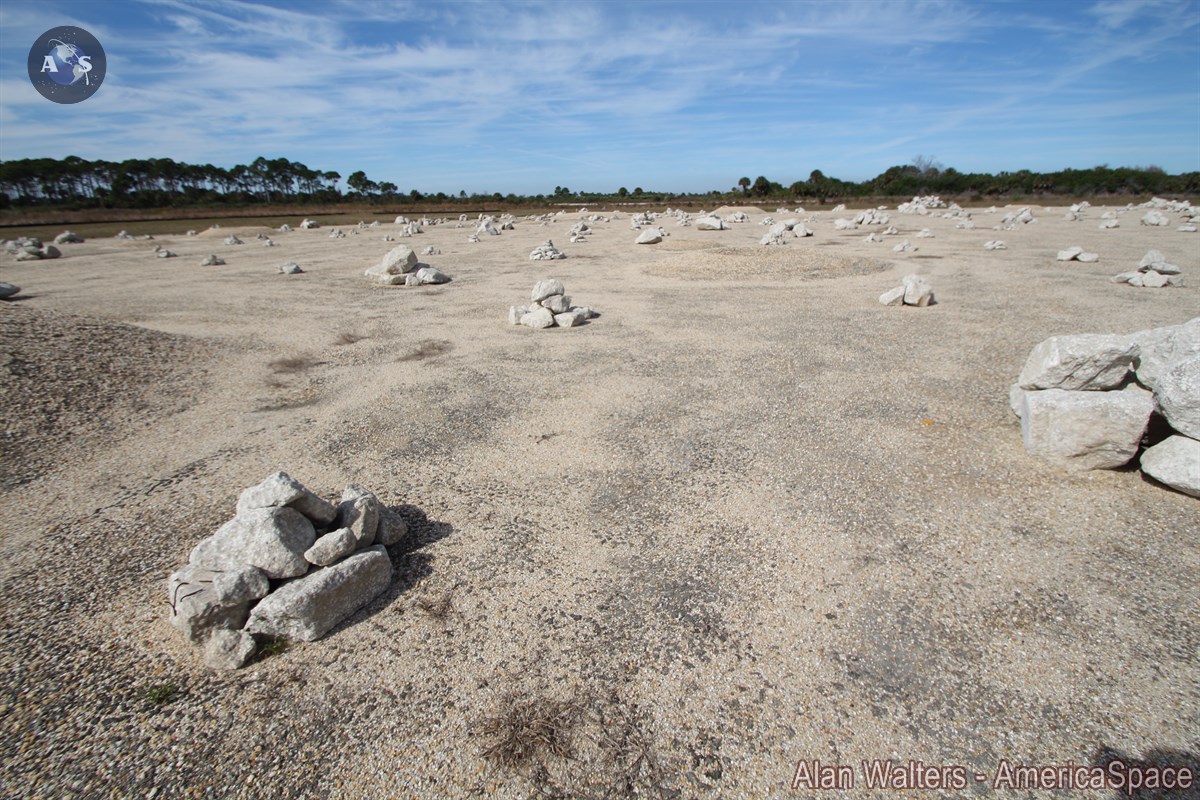
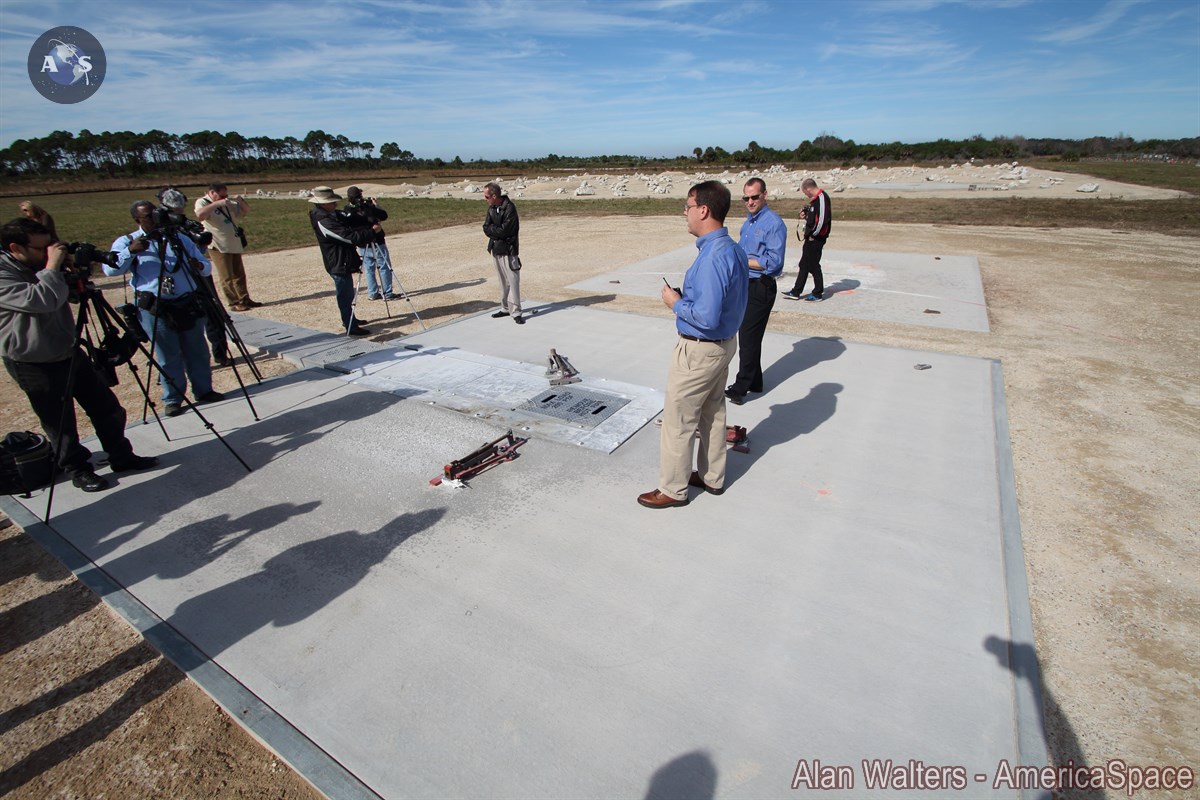
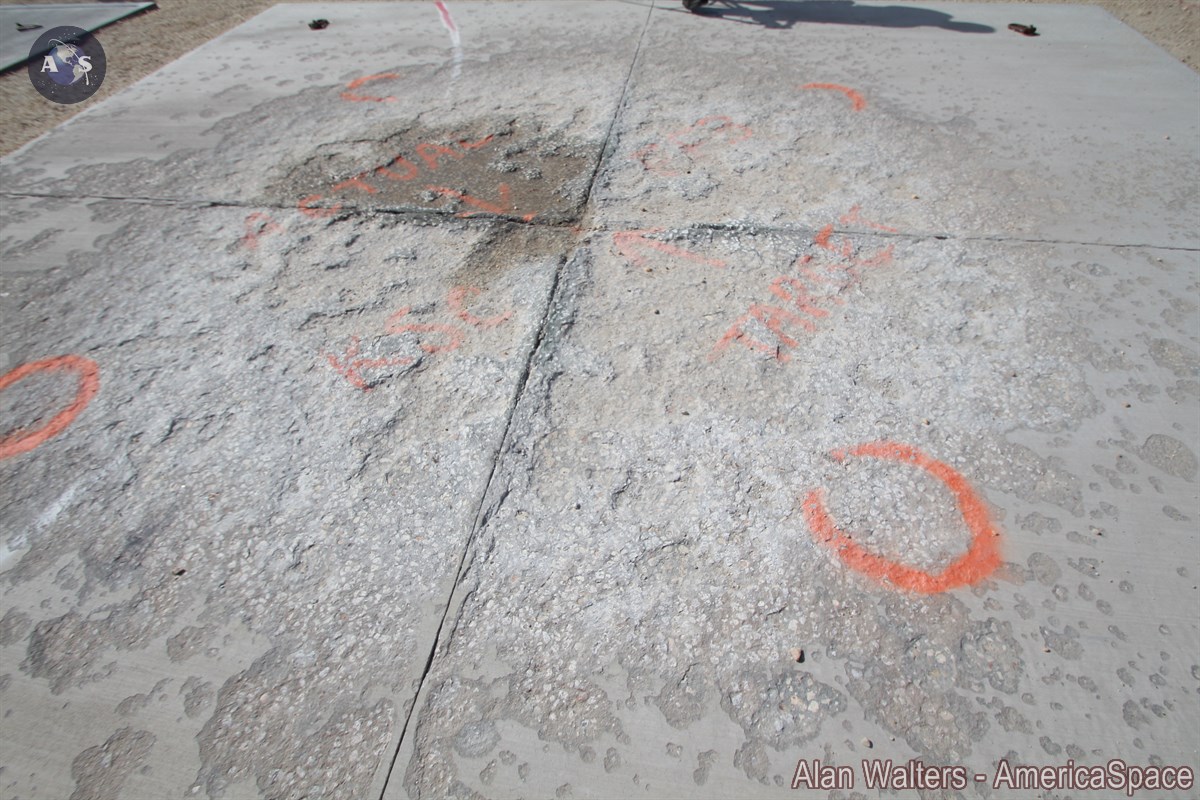
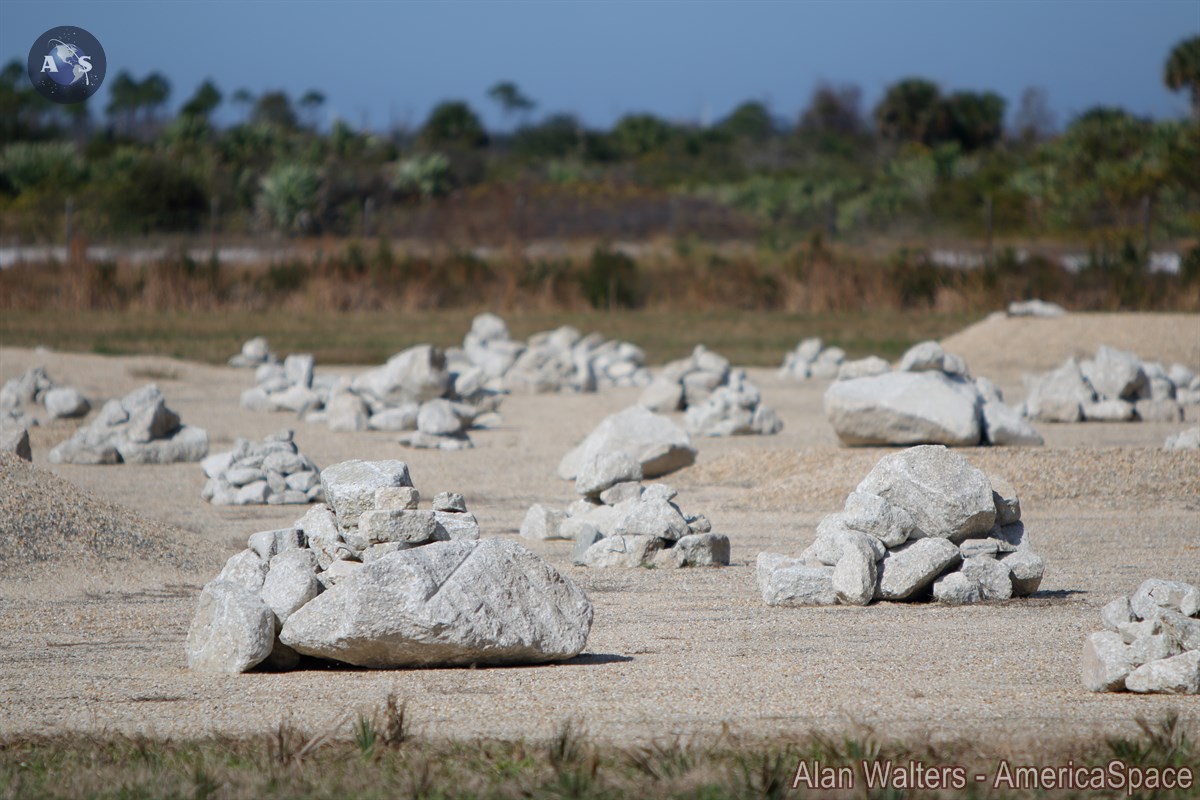
Mike and Leonidas, thank you for the excellent update on this exciting work! A very well-done, highly informative article, as has come to be expected from such talented individuals. I particularly enjoyed and took great satisfaction in the quote from Jenny Devolites that they have a team that “wants to build rockets and spacecraft and do whatever they can to help further human spaceflight and exploration.” THAT is the spirit that will carry us into deep space! Thank God it still exists!! Loved the great photos, especially the action figure of “Morpheus Man” attached to the lander, and the spray painted concrete pad with “actual” and “target” 11 inches apart! Great information about a very exciting project!
Wouldn’t it be wonderful to send a fleet of Morpheus vehicles to study the Jovian moons?
I think NASA making terrific progress on the Plantenary Lander and Space Launch System. I have always liked Space and aviation. But I also believe in the deep Space Concept of SKYLAB II using SLS technologies.